Мерцедес W12 (представяне)
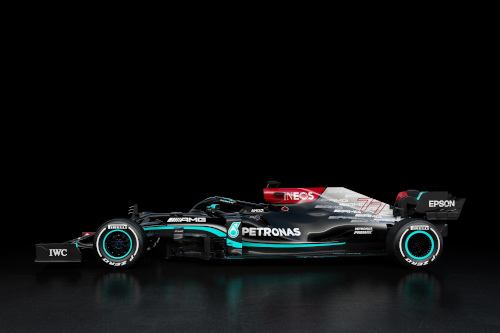
Мерцедес са поредния отбор, който представя болида си за сезон 2021 - W12.

(авторски права на снимките - Мерцедес)
(снимки от twitter)
Люис Хамилтън:
The launch day of a new car is always a really exciting one. It's great to reveal to the world the result of everyone's hard work at the factories and to see some of my team-mates in person, which has been so rare during the past year. I've been in touch with the engineers through the winter, keeping track of their preparations as I prepare myself for the season ahead. The excitement has been building and building, so now I just can't wait to get out on track in the W12.
Валтери Ботас:
Obviously we haven't been able to visit the factory much in the past year, so firstly, I'm really happy to be back here and to see the new car in person for the first time. I've been getting regular updates on how things are progressing, so it's nice to now be able to see the end result in the flesh and that just gets me more fired up for the new season. The cars are pretty similar to last year but there are some interesting aero changes that will have an impact on how the car handles and performs, so I'm looking forward to seeing how it feels on track in Bahrain.
Тото Волф:
I think the consistency we've had within this team over the years has been a real strength and advantage of ours. As we've seen in past seasons, it's a line-up that works well for us, with two incredibly strong drivers who also have a very professional working relationship together. Both are hungry and fired-up to get back racing again soon and we're all looking forward to seeing them drive our new car in anger for the first time in a few weeks.
Every year we reset our focus and define the right objectives. That may sound simple but it's damn hard and is probably why there are no sports teams out there with seven consecutive titles. So many things can happen and it's very natural to get used to success, and therefore not fight as hard for it.
But this team has not shown any of that. I see the same fire, hunger and passion now as I did the first time I walked through the doors in 2013. Every season presents a new challenge and therefore, a new goal for us to achieve. 2021 brings changes to the regulations, which could impact our competitiveness, plus the cost cap and working on the major rule changes of 2022. These challenges excite us.
The fact that we were able to attract INEOS as an investor shows that we have a strong business case and that F1 continues to be a highly attractive platform for big brands and companies. We're also seeing a slight shift in the way that F1 teams operate as the cost cap and the new structure move us towards a business model that is more familiar in American sports franchises.
At the same time, having three strong shareholders in the team gives us even more stability for the future. On a personal level, I'm very happy to commit to the team for the long term and increase my share slightly. I've always said that this team is like a family to me, and I'm incredibly proud of what we have achieved together.
We had to change the structure of our team, the way we work with each other, streamline our processes and become more efficient. And we fundamentally believe that the more efficient we are, the more performance gain that will translate to out on the circuit. So, it's had a huge impact, but it has also provided us with the opportunity to re-evaluate our organisation. That's why we set up Applied Science, bringing F1 know-how to many different customers, and it's going to really play a big part in our evolving business.
We have rolled out training for our recruiters to sensitise them on unconscious bias and all our managers have completed our inclusive excellence programme. At the same time, we've set ourselves the goal of at least 25 percent of all new starters coming from under-represented groups for the next five years. The latest step is a joint foundation that we will create together with Lewis to improve all aspects of diversity in motorsport.
All of these measures are encouraging, but we know that real change takes time and we're at the start of a very long journey. So, this topic will very much remain in our focus for years to come as we build on the foundations we've laid over the past few months.
We're continuing to push forward with our sustainability projects in 2021, with the aim of cutting our CO2 footprint by 50 percent by 2022 compared to 2018. A lot of work is also going into sustainable fuels for the future, particularly in Brixworth. Working alongside our title partner PETRONAS, the first step in the direction of sustainable fuel is the introduction of the E10 fuel for 2022, but all the Power Unit manufacturers and fuel manufacturers are also looking further down the line to a 100 percent sustainable fuel. It's a really intriguing challenge that we're facing.
Every year we reset our focus and define the right objectives. That may sound simple but it's damn hard and is probably why there are no sports teams out there with seven consecutive titles. So many things can happen and it's very natural to get used to success, and therefore not fight as hard for it.
But this team has not shown any of that. I see the same fire, hunger and passion now as I did the first time I walked through the doors in 2013. Every season presents a new challenge and therefore, a new goal for us to achieve. 2021 brings changes to the regulations, which could impact our competitiveness, plus the cost cap and working on the major rule changes of 2022. These challenges excite us.
The fact that we were able to attract INEOS as an investor shows that we have a strong business case and that F1 continues to be a highly attractive platform for big brands and companies. We're also seeing a slight shift in the way that F1 teams operate as the cost cap and the new structure move us towards a business model that is more familiar in American sports franchises.
At the same time, having three strong shareholders in the team gives us even more stability for the future. On a personal level, I'm very happy to commit to the team for the long term and increase my share slightly. I've always said that this team is like a family to me, and I'm incredibly proud of what we have achieved together.
We had to change the structure of our team, the way we work with each other, streamline our processes and become more efficient. And we fundamentally believe that the more efficient we are, the more performance gain that will translate to out on the circuit. So, it's had a huge impact, but it has also provided us with the opportunity to re-evaluate our organisation. That's why we set up Applied Science, bringing F1 know-how to many different customers, and it's going to really play a big part in our evolving business.
We have rolled out training for our recruiters to sensitise them on unconscious bias and all our managers have completed our inclusive excellence programme. At the same time, we've set ourselves the goal of at least 25 percent of all new starters coming from under-represented groups for the next five years. The latest step is a joint foundation that we will create together with Lewis to improve all aspects of diversity in motorsport.
All of these measures are encouraging, but we know that real change takes time and we're at the start of a very long journey. So, this topic will very much remain in our focus for years to come as we build on the foundations we've laid over the past few months.
We're continuing to push forward with our sustainability projects in 2021, with the aim of cutting our CO2 footprint by 50 percent by 2022 compared to 2018. A lot of work is also going into sustainable fuels for the future, particularly in Brixworth. Working alongside our title partner PETRONAS, the first step in the direction of sustainable fuel is the introduction of the E10 fuel for 2022, but all the Power Unit manufacturers and fuel manufacturers are also looking further down the line to a 100 percent sustainable fuel. It's a really intriguing challenge that we're facing.
Джеймс Алисън:
If you're looking to slow a car down, which is effectively what the regulation changes were intended to do, modifying the floor is by far the easiest and cheapest way of achieving your objective. The floor is such an important aerodynamic component that small geometrical changes bring large reductions in performance. Once the rules had been established, our task was to figure out how to recover the losses brought by the changes.
What's carried over will look different from team to team, because the rules didn't require you to carry over the same things. The rules freeze a large chunk of the car, but then give each team two tokens to spend on changing their car. Along with the tokens comes a shopping list showing how many tokens are required for each change. How teams decided what to use their tokens on was entirely up to them.
In addition, there are some parts of the car that you can change token-free, for example the Power Unit, the cooling systems, the suspension and of course all of the aerodynamic surfaces. We have spent our tokens, but we won't reveal how we used them just yet. That'll become clear in good time. Once the racing gets underway, pretty much everything under the skin of the car must then be frozen for the entire year. With the specific permission of the FIA, you can make changes for reliability or cost saving, but if part of your car isn't performing well, then you are stuck with it for the whole season.
Our other aerodynamic work has been the normal fare of seeking out aerodynamic opportunity across every square centimetre of the car with particular attention to finding places where we can invest extra weight into fancier aerodynamic geometry.
2021 permits the cars to be 6kg heavier, and we have an additional few kilos to spend as a result of DAS being banned. Beyond this, the carryover rules have confined us to figuring out how we can make some parts live longer, so we don't have to replace or buy them so often.
We have always tried to get the most out of every wind tunnel and CFD session, but there's nothing like having a new constraint imposed to renew the spur to become more productive and efficient. We are determined to find better ways of working so that we can mitigate the effect of this handicapping.
The tyre is a little slower, owing to the trade-off for more durability, but it is consistent and should give us trouble-free racing. However, it will be an interesting competitiveness factor during 2021. Any time a tyre changes, it is always a learning race between the teams to find its sweet spot - where the new rubber gives its best performance.
The ideal situation would be to have a car that is so brilliantly fast, you can almost turn your back on it immediately and focus on the next one. But Formula One is never that simple. The siren call of the 2021 racing campaign will inevitably draw our attention from the seismic changes of the 2022 regulations.
We will walk a tightrope all year between doing enough to be competitive in 2021 and putting as much as we dare into 2022. Managing the bird in the hand and the one in the bush is the eternal challenge of F1 and doing so in the face of both the cost cap and the completely new 2022 technical regulations will be a challenge like no other.
We will try to ensure that we protect the rate at which we learn how to make the car go faster, but the cost cap will inevitably change the intervals between updates. We will have to wait longer, and combine the gains into bigger steps, before we spend the money to manufacture them, in order to ensure we don't run out of development budget early in the season.
What's carried over will look different from team to team, because the rules didn't require you to carry over the same things. The rules freeze a large chunk of the car, but then give each team two tokens to spend on changing their car. Along with the tokens comes a shopping list showing how many tokens are required for each change. How teams decided what to use their tokens on was entirely up to them.
In addition, there are some parts of the car that you can change token-free, for example the Power Unit, the cooling systems, the suspension and of course all of the aerodynamic surfaces. We have spent our tokens, but we won't reveal how we used them just yet. That'll become clear in good time. Once the racing gets underway, pretty much everything under the skin of the car must then be frozen for the entire year. With the specific permission of the FIA, you can make changes for reliability or cost saving, but if part of your car isn't performing well, then you are stuck with it for the whole season.
Our other aerodynamic work has been the normal fare of seeking out aerodynamic opportunity across every square centimetre of the car with particular attention to finding places where we can invest extra weight into fancier aerodynamic geometry.
2021 permits the cars to be 6kg heavier, and we have an additional few kilos to spend as a result of DAS being banned. Beyond this, the carryover rules have confined us to figuring out how we can make some parts live longer, so we don't have to replace or buy them so often.
We have always tried to get the most out of every wind tunnel and CFD session, but there's nothing like having a new constraint imposed to renew the spur to become more productive and efficient. We are determined to find better ways of working so that we can mitigate the effect of this handicapping.
The tyre is a little slower, owing to the trade-off for more durability, but it is consistent and should give us trouble-free racing. However, it will be an interesting competitiveness factor during 2021. Any time a tyre changes, it is always a learning race between the teams to find its sweet spot - where the new rubber gives its best performance.
The ideal situation would be to have a car that is so brilliantly fast, you can almost turn your back on it immediately and focus on the next one. But Formula One is never that simple. The siren call of the 2021 racing campaign will inevitably draw our attention from the seismic changes of the 2022 regulations.
We will walk a tightrope all year between doing enough to be competitive in 2021 and putting as much as we dare into 2022. Managing the bird in the hand and the one in the bush is the eternal challenge of F1 and doing so in the face of both the cost cap and the completely new 2022 technical regulations will be a challenge like no other.
We will try to ensure that we protect the rate at which we learn how to make the car go faster, but the cost cap will inevitably change the intervals between updates. We will have to wait longer, and combine the gains into bigger steps, before we spend the money to manufacture them, in order to ensure we don't run out of development budget early in the season.
Hywel Thomas:
We are going into the eighth season of pretty stable regulations, so we have a good understanding of the current hybrid engines. Our new product is a characteristic Mercedes-AMG Power Unit, but we've worked hard to take the next development step. Stable regulations mean that it's getting increasingly challenging to unlock additional performance, so you need a focused approach.
We identified three main areas to work on: first, we've continued the development of the technology in the Power Unit. That's a continuous process, and we feel like we've been able to take a step forward on that front again this year. The second area is reliability. We discovered some design issues last year, so we've been looking at those and introduced some changes to address them. And we've also got some completely new innovations that will be in the racing PU for the first time. That was particularly challenging because last season finished late, so the winter period has been shorter than normal and has given us less time to prepare, which put extra strain on the business.
A third customer team does put more pressure on the organisation. We need to take more engines to winter testing, we need to take more engines to the first race, but we don't want to freeze our designs any earlier because of that. So that puts some additional strain on the internal and external supply chains and the build and test team, to be able to develop the design for as long as possible. What we gain is another group of chassis designers looking at the PU, looking at how it works, how it's integrated into the car, how it's working with the rest of the package. We can add all those comments and ideas into the melting pot of this season and all the subsequent seasons.
It's similar to how wind tunnel usage has seen restrictions for a number of years, but we had to implement the restrictions with immediate effect for the dyno. Now, we need to decide earlier what projects to focus on, because we can't afford to use precious dyno hours on ideas that end up not making it to the car.
Starting in 2022, F1 engines will be powered using E10 fuels - so fuels that contain 10 percent ethanol. This might not sound like a radical change, but it changes the combustion process significantly, so there's a lot of development work to be done. There are also some changes around the ERS components.
Obviously, the biggest changes in 2022 are on the chassis side, which are enormous. That also impacts all of us in Brixworth because putting the PU into a completely new chassis means there will be some changes where the PU is mounted. As the chassis engineers become more knowledgeable on what they need for the car to go quickly, and how they need to position all the systems within the chassis, the impact on the PU will become clearer as well.
We had already started work on that, as the regulations were originally going to be implemented this year, but now the real challenges begin. We are full steam ahead to optimise the PU for those significant new regulations. So, our ability to find 'the winners', the ideas that have the potential to give us an advantage, and back them with the correct amount of resource to develop and deploy them, is going to be key this year.
We identified three main areas to work on: first, we've continued the development of the technology in the Power Unit. That's a continuous process, and we feel like we've been able to take a step forward on that front again this year. The second area is reliability. We discovered some design issues last year, so we've been looking at those and introduced some changes to address them. And we've also got some completely new innovations that will be in the racing PU for the first time. That was particularly challenging because last season finished late, so the winter period has been shorter than normal and has given us less time to prepare, which put extra strain on the business.
A third customer team does put more pressure on the organisation. We need to take more engines to winter testing, we need to take more engines to the first race, but we don't want to freeze our designs any earlier because of that. So that puts some additional strain on the internal and external supply chains and the build and test team, to be able to develop the design for as long as possible. What we gain is another group of chassis designers looking at the PU, looking at how it works, how it's integrated into the car, how it's working with the rest of the package. We can add all those comments and ideas into the melting pot of this season and all the subsequent seasons.
It's similar to how wind tunnel usage has seen restrictions for a number of years, but we had to implement the restrictions with immediate effect for the dyno. Now, we need to decide earlier what projects to focus on, because we can't afford to use precious dyno hours on ideas that end up not making it to the car.
Starting in 2022, F1 engines will be powered using E10 fuels - so fuels that contain 10 percent ethanol. This might not sound like a radical change, but it changes the combustion process significantly, so there's a lot of development work to be done. There are also some changes around the ERS components.
Obviously, the biggest changes in 2022 are on the chassis side, which are enormous. That also impacts all of us in Brixworth because putting the PU into a completely new chassis means there will be some changes where the PU is mounted. As the chassis engineers become more knowledgeable on what they need for the car to go quickly, and how they need to position all the systems within the chassis, the impact on the PU will become clearer as well.
We had already started work on that, as the regulations were originally going to be implemented this year, but now the real challenges begin. We are full steam ahead to optimise the PU for those significant new regulations. So, our ability to find 'the winners', the ideas that have the potential to give us an advantage, and back them with the correct amount of resource to develop and deploy them, is going to be key this year.
Още от сезон 2021:
- Абу Даби 2021 - резултати от прогнозите (игра)
- Абу Даби 2021 - състезанието
- Абу Даби 2021 - оценете състезанието
- Абу Даби 2021 - събота (снимки)
- Абу Даби 2021 - квалификация за място
- Абу Даби 2021 - прогнози (игра)
- Абу Даби 2021 - трета тренировка
- Абу Даби 2021 - петък (снимки)
- Абу Даби 2021 - втора тренировка (графика)
- Аби Даби 2021 - първа тренировка (графика)
Все още няма коментари
Нов коментар
Само регистрирани потребители могат да коментират. Ако вече имате регистрация можете да влезете в сайта от "Вход". В противен случай можете да се регистирате като натиснете "Вход" и избере "Регистрация". За повече информация: f1.f-e-n.net/index.php/url14729






























.jpg)
.jpg)
.jpg)











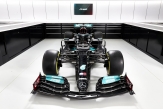
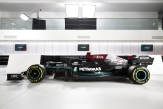
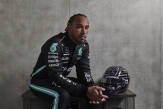

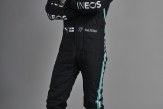
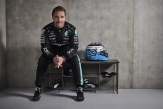
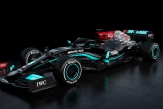
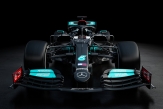

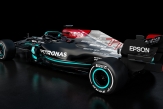
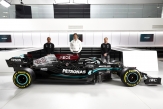
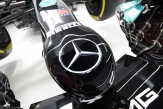

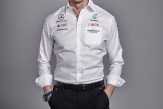
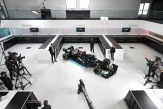
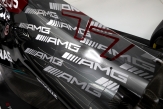
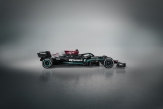
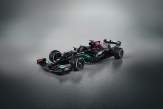
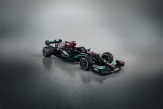
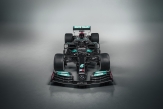
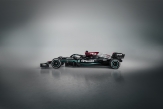

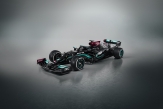
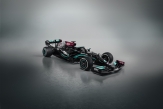
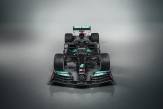
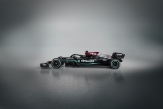
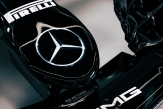

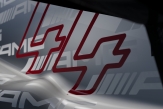
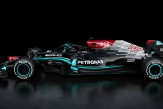
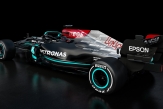

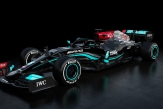

Коментари